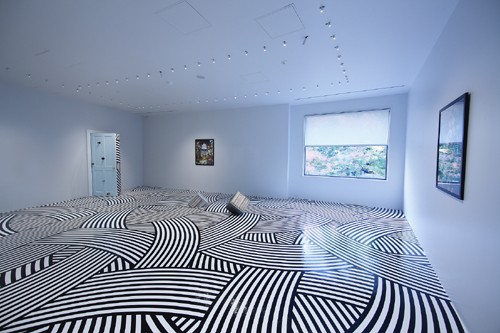The exhibition, STOPGAP–Homage to Rauschenberg: Selections from the Hara Museum Collection is now on view at the Hara Museum of Contemporary Art in Tokyo. The show features Robert Rauschenberg’s Stopgap, one of the works which won him the Grand Prize at the Venice Biennale, the first time the honor had gone to an American. The show looks back on American art spanning the period from the mid-20th century to the present.
* * * * * * * * * * * *
Today, we would like to introduce the first in a three-part series on the Hara Museum’s lighting system in Tokyo.
In June 2008, the museum’s galleries, corridors and the staircase were updated with a cutting edge lighting system.
Since its opening in 1979, the Hara Museum of Contemporary Art (Tokyo) has held exhibitions that make use of its uniquely intimate space that reflects its former state as a private residence during the early Showa period (built in 1938). The new lighting system allows visitors to experience the original beauty of the space as intended by the architect.

Jim Lambie: Unknown Pleasures installation view *this exhibition is OVER (on view from December 13, 2008 to March 29, 2009) copyright: Jim Lambie photo: Hirotaka Yonekura
Masami Tsubouchi (curator, Hara Museum) was especially impressed with the power of new system.
“The black-and-white pattern of Lambie’s trademark installation work was beautifully brought out by uniform light that illuminates the entire surface of the work. And the system does this without drawing attention to itself, allowing viewers to focus on the artwork on hand.”
The lighting system was designed by Shozo Toyohisa, a lighting expert with an international roster of clients.
In rethinking the relationship between light and the gallery space, he came up with three aims:
1. to incorporate a system with a minimal profile
2. to maximize the beauty of the artwork on display
3. to achieve the highest standard in conservation science
To achieve these goals, he adopted a “wall-washer” method which illuminates entire walls, rather than the traditional spotlights used in museums to illuminate each work individually.
